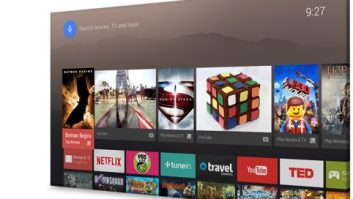
Twitter and Facebook confront increasing competition for social TV advertising revenue and viewer engagement from rival social media and mobile messaging companies, according to the recent Futurescape’s Social TV strategy report.
The Social TV (7th edition) report reveals how social media rivals, such as social news service BuzzFeed and Yahoo’s multimedia blogging platform Tumblr, have set their sights on social TV promotion and ad revenue.
Broadcasters and producers are adopting multiple messaging apps and social networks for social TV interaction, beyond Twitter and Facebook.
Social news service BuzzFeed has launched a Social Tune In Program, which enables broadcasters to promote their shows and drive audience tune-in.
Yahoo’s multimedia blogging platform Tumblr is already co-operating with Viacom to offer advertising opportunities around top Viacom TV programming, such as the MTV Movie Awards. It also recently commissioned research into its social TV engagement, positioning it as a direct competitor to Twitter.
Broadcasters such as the BBC are working with leading mobile messaging apps, like WeChat and Facebook’s WhatsApp, for viewer involvement. They are using the apps to distribute content, engage users and invite viewer contributions: comments, photos and video clips.
The messaging apps are experiencing fast growth and accumulating huge international user bases, making them potential venues for mass viewer engagement. WhatsApp has half a billion monthly active users and WeChat 396m, compared with Twitter’s 255m.
Producers are also turning to a wide range of social networks for interacting with fans, not just Twitter and Facebook. The Voice USA runs its social TV engagement across multiple other social networks and mobile apps, including Google+, Keek, Pinterest, Snapchat, Tumblr and YouTube, plus Facebook’s Instagram and Twitter’s Vine.
The FIFA World Cup will be the major social TV event of the year: the 2010 World Cup final had an estimated 700m viewers worldwide. Twitter, Facebook, WeChat and Sony have all launched rival World Cup social TV services.
Twitter’s Amplify, which integrates video into tweets, is ideally suited for sports highlights. Twitter has deals with major broadcasters, such as ITV in the UK, to use Amplify for their World Cup coverage.
Facebook is offering brands targeting of World Cup soccer fans as an audience segment. Its video advertising product is available for broadcasters to show their video clips via the social network.
WeChat has adopted an editorial-led strategy, assigning more than 120 journalists, editors and photographers to Brazil for its TV-related coverage of the World Cup.
Major brands are also entering social TV. Sony, which sponsors the tournament, has launched One Stadium Live. This multi-language social curation service connects fans with football buzz from Twitter, Facebook and Google+ and is edited by 32 staff writing in English, Portuguese, French, German, Spanish and Japanese.
This story also appears on IBC’s Content Everywhere.








